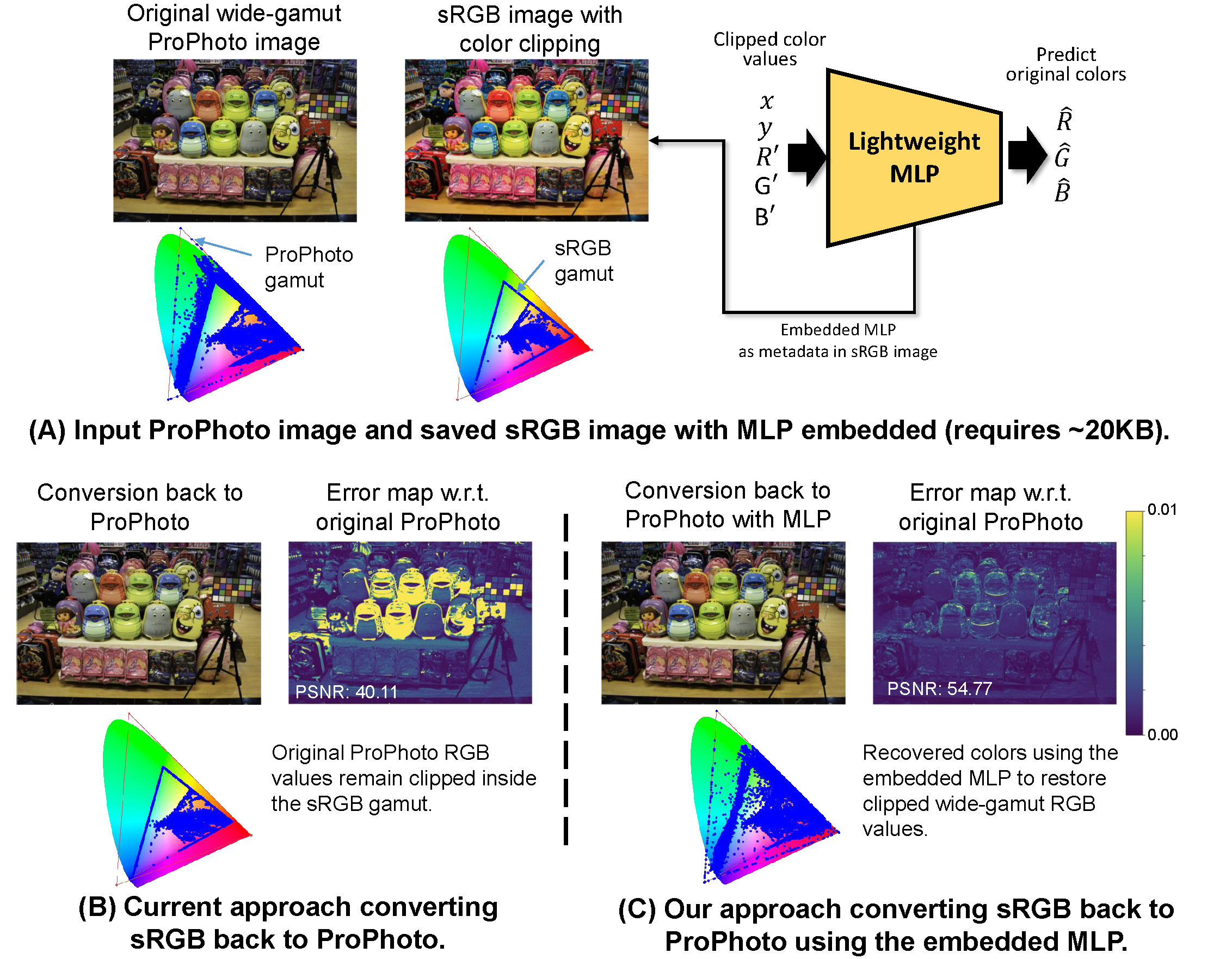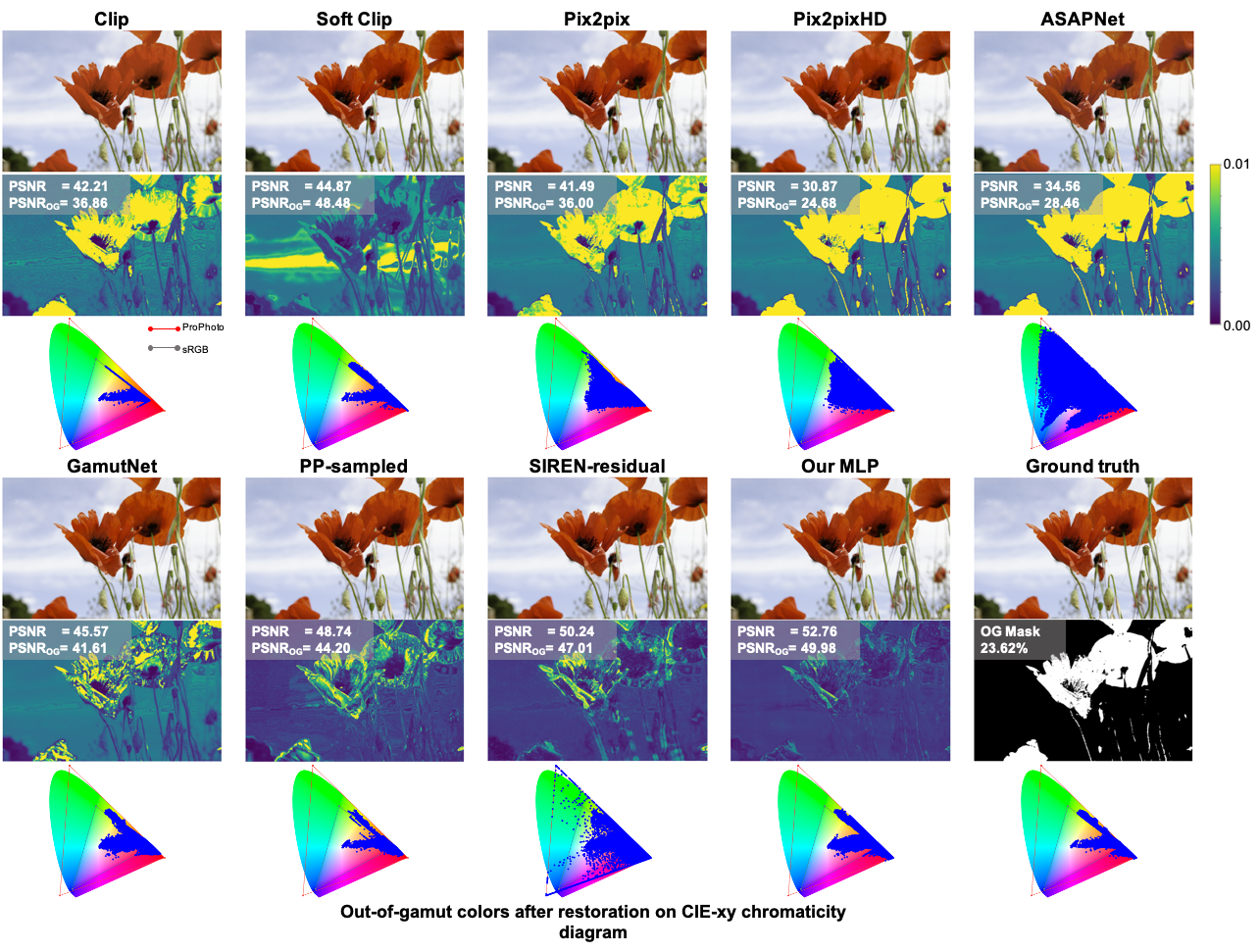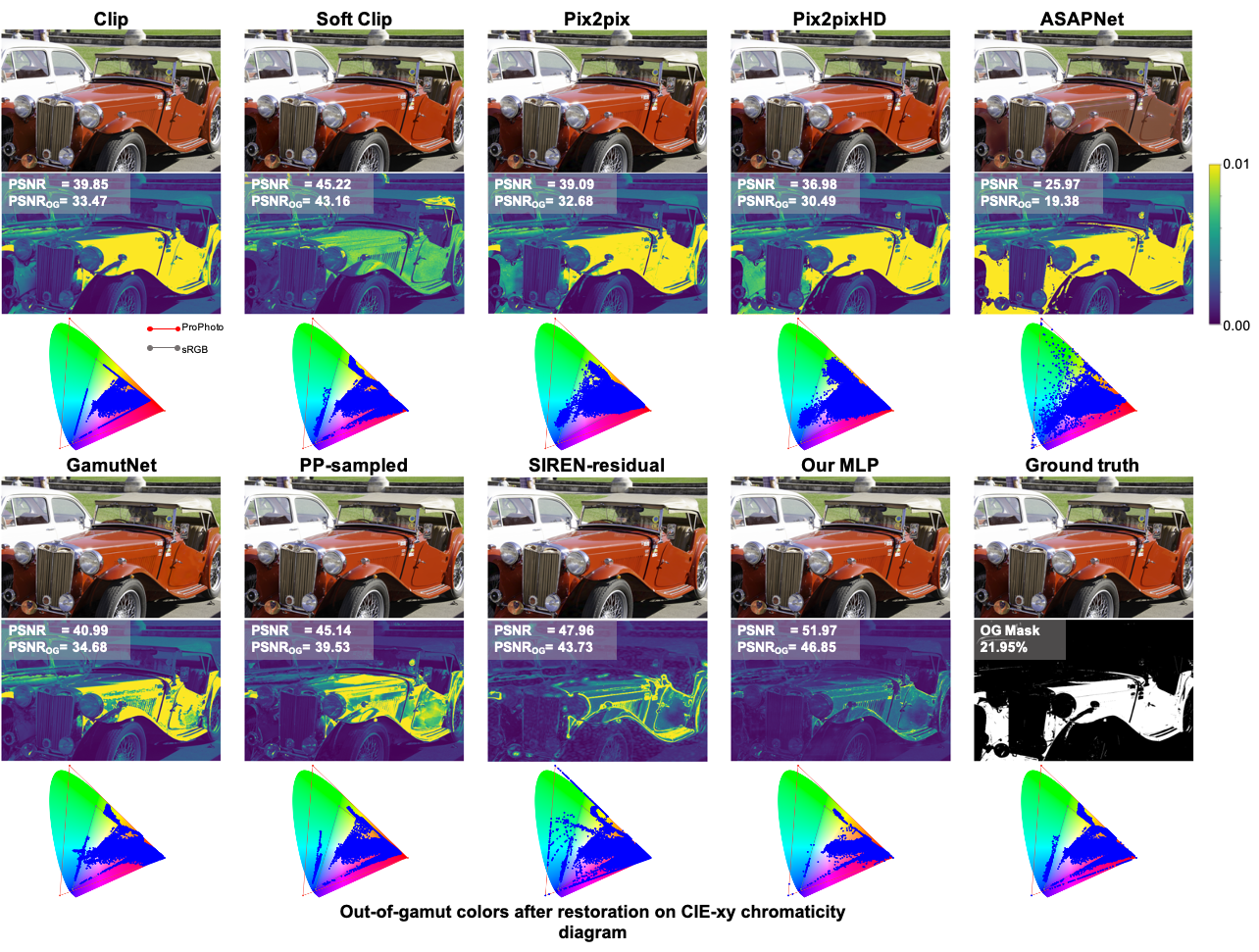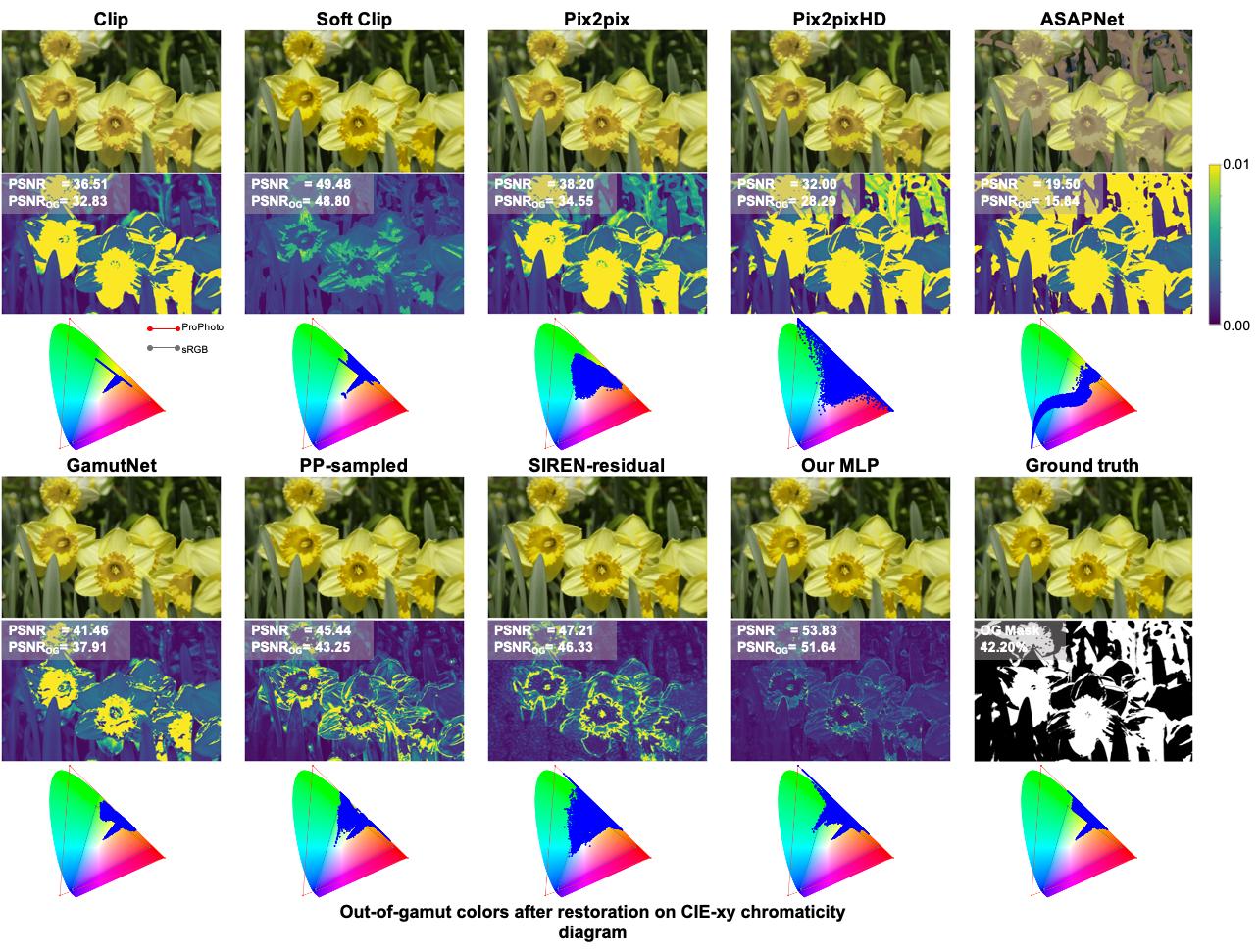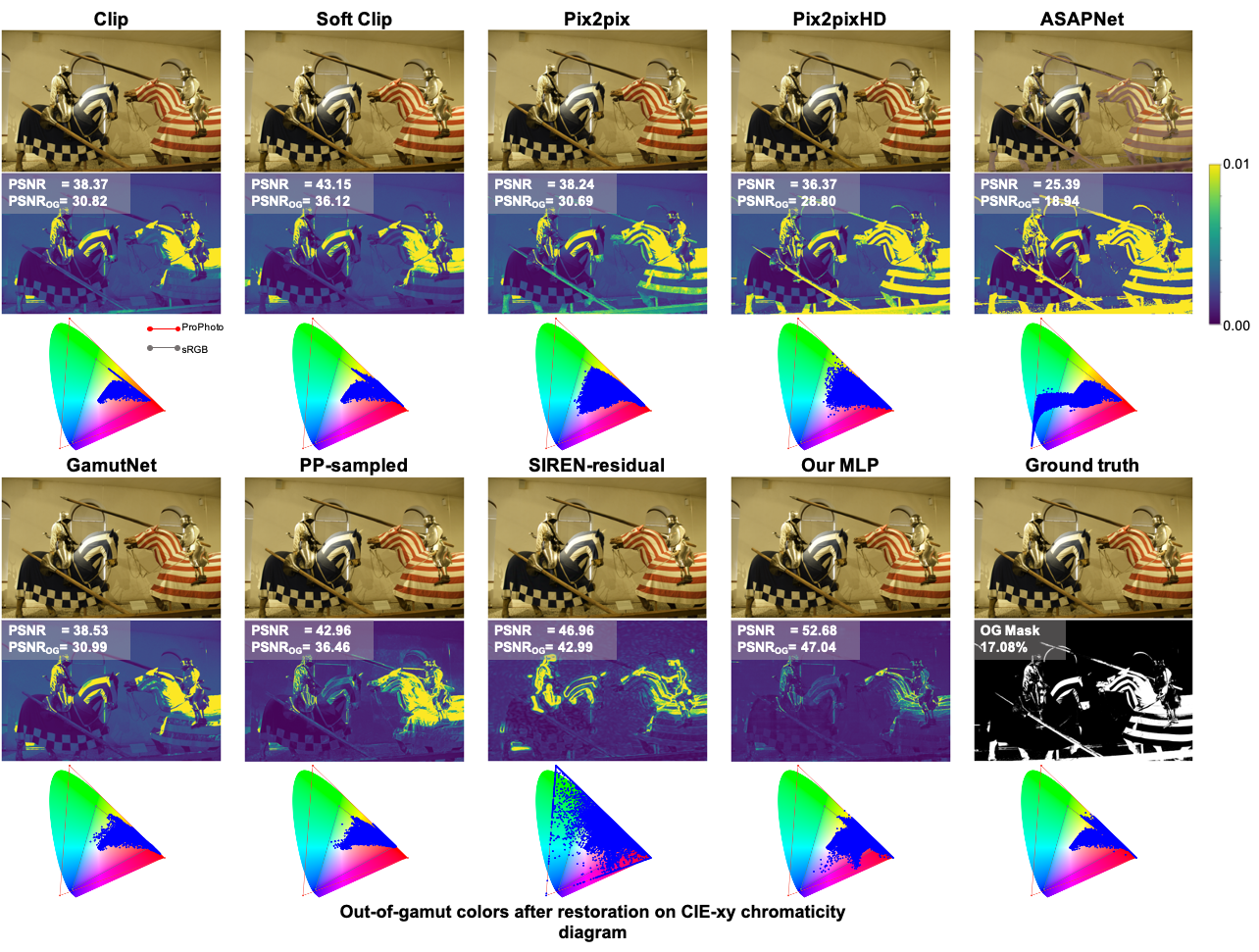Abtract
Cameras and image-editing software often process images in the wide-gamut ProPhoto color space, encompassing 90% of all visible colors. However, when images are encoded for sharing, this color-rich representation is transformed and clipped to fit within the small-gamut standard RGB (sRGB) color space, representing only 30% of visible colors. Recovering the lost color information is challenging due to the clipping procedure. Inspired by neural implicit representations for 2D images, we propose a method that optimizes a lightweight multi-layer-perceptron (MLP) model during the gamut reduction step to predict the clipped values. GamutMLP takes approximately 2 seconds to optimize and requires only 23 KB of storage. The small memory footprint allows our GamutMLP model to be saved as metadata in the sRGB image---the model can be extracted when needed to restore wide-gamut color values. We demonstrate the effectiveness of our approach for color recovery and compare it with alternative strategies, including pre-trained DNN-based gamut expansion networks and other implicit neural representation methods. As part of this effort, we introduce a new color gamut dataset of 2200 wide-gamut/small-gamut images for training and testing.
Our goal
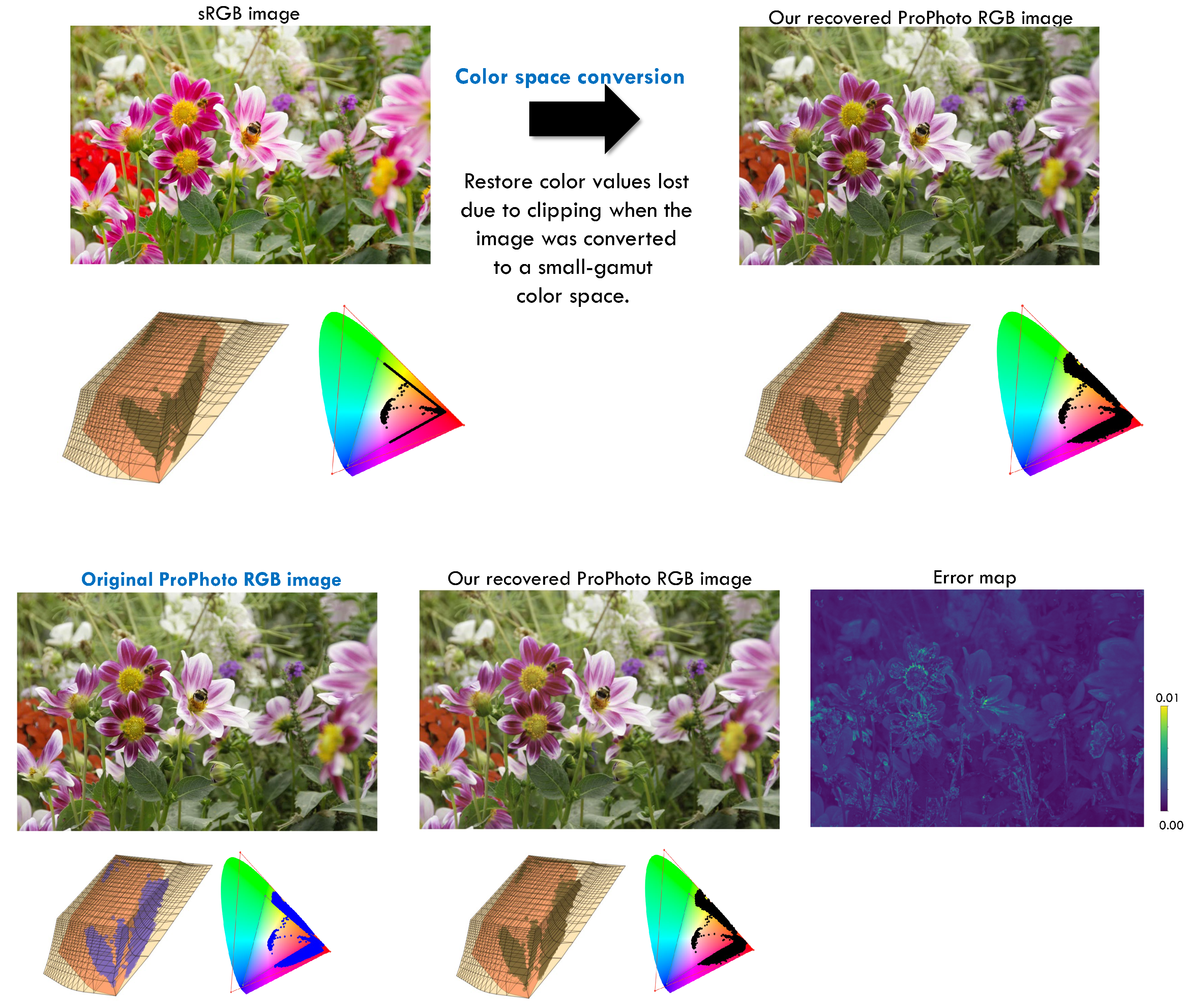
Our approach
